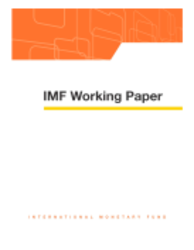
External Balance in Low Income Countries
This paper offers a coherent empirical analysis of the determinants of the real exchange rate, the current account, and the net foreign assets position in low income countries. The paper focuses on indicators specific to low income countries, such as the quality of policies and institutions, the special access to official external financing, and the role of shocks. In addition to more standard factors, we find that domestic financial liberalization is associated with higher current account balances and net foreign asset positions, while capital account liberalization is associated with lower current account balances and net foreign asset positions and with more appreciated real exchange rates. Negative exogenous shocks tend to raise (reduce) the current account in countries with closed (opened) capital accounts. Finally, foreign aid is progressively absorbed over time through net imports, and is associated with a more depreciated real exchange rate in the long-run.
Publication date: October 2009
ISBN: 9781451873689
$18.00
Add to Cart by clicking price of the language and format you'd like to purchase
Available Languages and Formats
| English |
Prices in red indicate formats that are not yet available but are forthcoming.
Topics covered in this book
This title contains information about the following subjects.
Click on a subject if you would like to see other titles with the same subjects.
Money and Monetary Policy , real exchange rate , net foreign assets , exchange rate , capital account liberalization , International Lending and Debt Problems
Also of interest
Summary
Copyright © 2010 - 2026
Powered by:
AIDC



